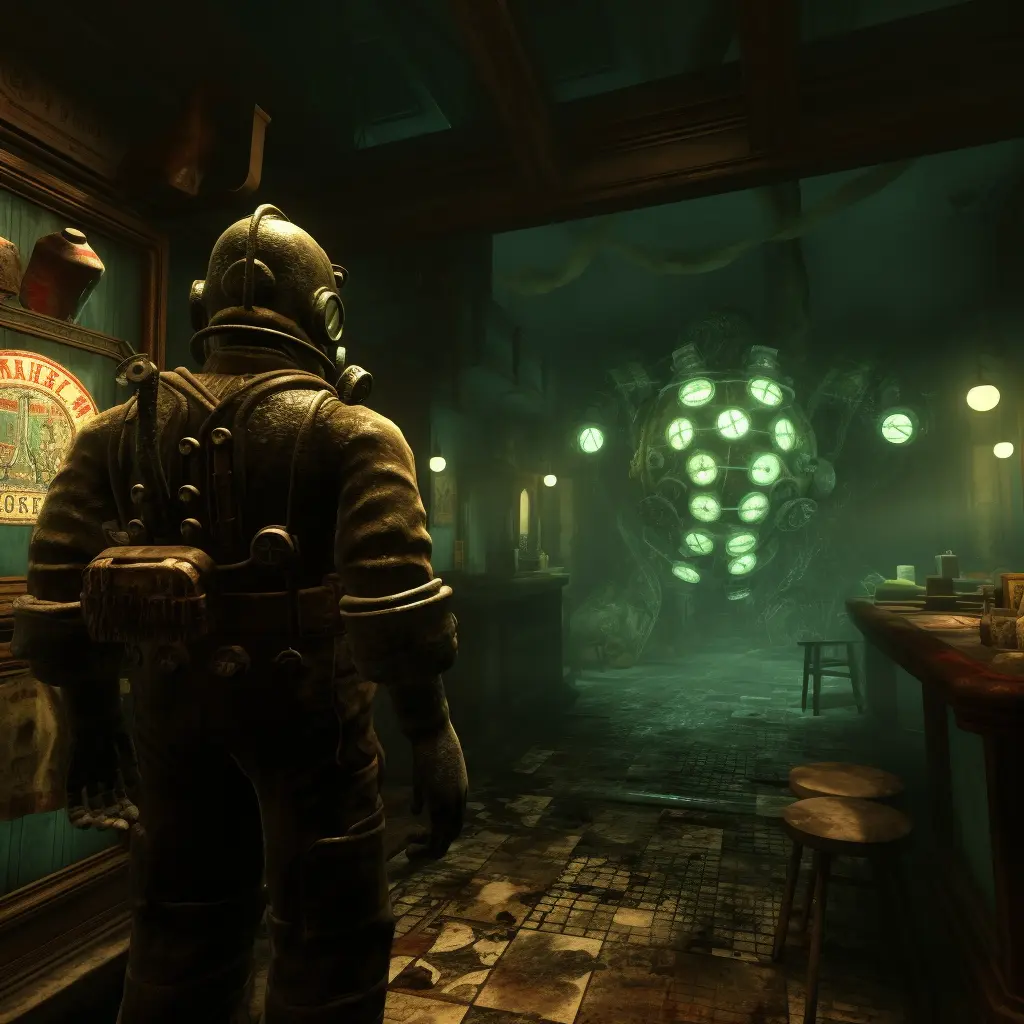Ken Levine: Visionary Behind the Sky Cities and Underwater Utopias
When we speak about narrative-driven, thought-provoking, and thematically rich games, the mind often drifts to the worlds created by Ken Levine. A beacon of innovation and storytelling, Levine's journey in the gaming industry is one of passion, persistence, and profound creativity.

When we speak about narrative-driven, thought-provoking, and thematically rich games, the mind often drifts to the worlds created by Ken Levine. A beacon of innovation and storytelling, Levine's journey in the gaming industry is one of passion, persistence, and profound creativity.
From Theater Curtains to Pixelated Worlds
The journey from theater to video games may seem like an unlikely transition. However, for Ken Levine, his early foundations in drama and playwriting would provide the ideal backdrop for a career crafting compelling narratives in the gaming world.
The Dramatic Beginnings
Before pixels and code became his primary medium, the stage was Levine's first love. He spent several years in New York trying to make it as a playwright. While most remember Levine for his video game accomplishments, it's crucial to understand that his initial experiences in scripting, setting scenes, and developing characters began amidst the dim lights and echoing applause of theaters.
Evan Wells, co-president of Naughty Dog, once mentioned,
Ken's deep-rooted understanding of drama and character development is evident in his games. It's no surprise he started in theater.
Transition to the Digital Realm
The move to video games was not immediate or straightforward. Ken often found himself at a crossroads, torn between his passion for theater and the allure of the burgeoning video game industry. The 1990s were a transformative period for games, shifting from basic entertainment to platforms for complex storytelling.
Jonathan Blow, creator of "The Witness" and "Braid," reminisced about Levine's transition, stating,
I remember Ken grappling with the decision. He saw games as uncharted territory, a new frontier for storytelling. He was excited about the possibilities, and honestly, we're all better off for his decision.
Marrying Two Passions
Levine's theater background didn't fade away as he dived into game development; it became an asset. He would often approach game narratives like a play, focusing on the pacing, the character arcs, and dramatic climaxes.
In a panel discussion at GDC 2011, fellow game designer Amy Hennig noted,
Ken's approach was different. While we were discussing mechanics and level design, he'd interject with character motivations, backstories, and plot twists, much like how a playwright would.
A Unique Lens on Game Development
Some inside stories from the early days at Irrational Games show Levine's theater influences in action. During the development of "System Shock 2," he was known to hold script readings. Team members would gather, voice scripts, and discuss character motivations in-depth. This practice, borrowed from his theater days, allowed the team to gauge narrative flow and character believability.
Anecdotes from former colleagues depict a visionary who would sometimes reference Shakespeare, Chekhov, or Ibsen during brainstorming sessions, drawing parallels and seeking inspiration.
"System Shock 2": The Game That Echoed a Theater Man's Vision
Before "BioShock" became a household name, Ken Levine's genius was first truly showcased in the haunting corridors and AI-driven narratives of "System Shock 2." Here's a dive into how Levine's theatrical instincts blended seamlessly with game design to craft this masterpiece.
SHODAN's presence in 'System Shock 2' is almost Shakespearean. There's this omnipresent menace, always watching, always judging. It's brilliant storytelling.